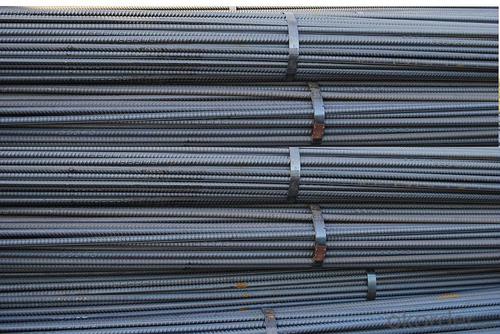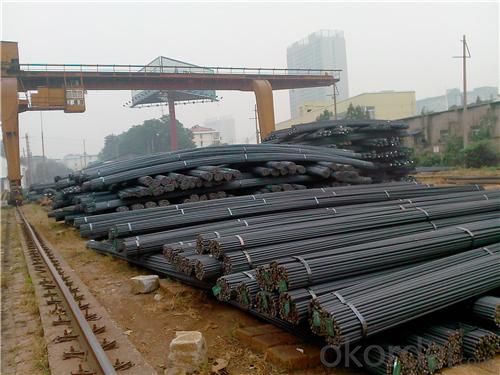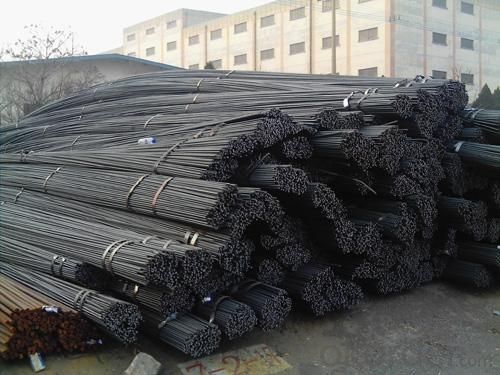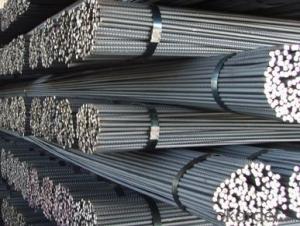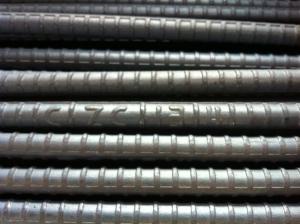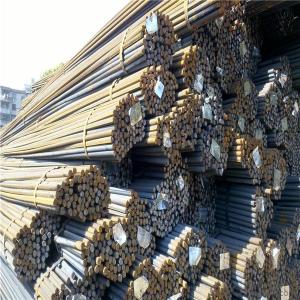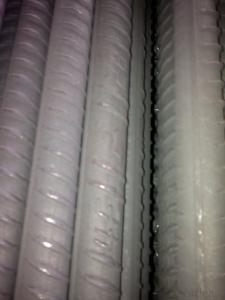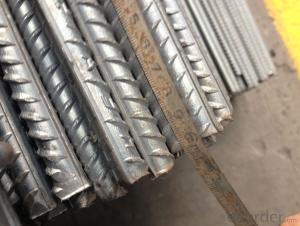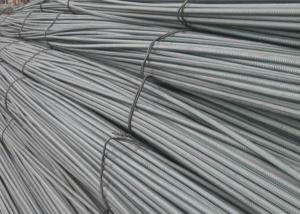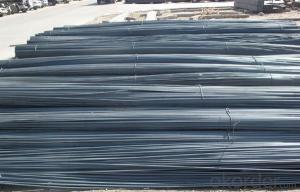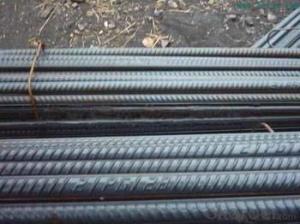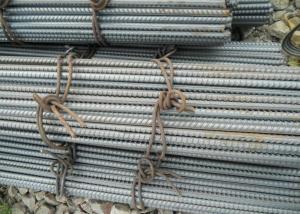GB Standaerd deformed steel bar for construction
- Loading Port:
- Tianjin
- Payment Terms:
- TT or LC
- Min Order Qty:
- 25 m.t.
- Supply Capability:
- 100000 m.t./month
OKorder Service Pledge
OKorder Financial Service
You Might Also Like
Product Description:
OKorder is offering GB Standaerd deformed steel bar for construction at great prices with worldwide shipping. Our supplier is a world-class manufacturer of steel, with our products utilized the world over. OKorder annually supplies products to European, North American and Asian markets. We provide quotations within 24 hours of receiving an inquiry and guarantee competitive prices.
Product Applications:
GB Standaerd deformed steel bar are ideal for structural applications and are widely used in the construction of buildings and bridges, and the manufacturing, petrochemical, and transportation industries.
Product Advantages:
OKorder's deformed steel bar are durable, strong, and resist corrosion.
Main Product Features:
· Premium quality
· Prompt delivery & seaworthy packing (30 days after receiving deposit)
· Corrosion resistance
· Can be recycled and reused
· Mill test certification
· Professional Service
· Competitive pricing
Product Specifications
Deformed bar is widely used in buildings, bridges, roads and other engineering construction. Big to highways, railways, bridges, culverts, tunnels, public facilities such as flood control, dam, small to housing construction, beam, column, wall and the foundation of the plate, deformed bar is an integral structure material. With the development of world economy and the vigorous development of infrastructure construction, real estate, the demand for deformed bar will be larger and larger..
Packaging & Delivery of Deformed Steel Bar:
Packaging Detail: products are packed in bundle and then shipped by container or bulk vessel, deformed bar is usually naked strapping delivery, when storing, please pay attention to moisture proof. The performance of rust will produce adverse effect.
Each bundle weight: 2-3MT, or as required
Payment term: TT or L/C
Delivery Detail: within 45 days after received advanced payment or LC.
Label: to be specified by customer, generally, each bundle has 1-2 labels
Trade terms: FOB, CFR, CIF
Deformed Steel Bar in Coil
Produce Line of Deformed Steel Bar
Note:
1. Our products are produced according to national standard (GB), if not, supply according to national standards (GB) or agreement as customer required.
2. Other Grade and Standard Deformed Steel Bar we can supply:
Grade: GR40/GR60, G460B/B500A/B500B/B500C,BST500S
Standard: ASTM, BS, DIN
The Minimum Order Quantity of these products is high, and need to be confirmed.
3. We can not only supply Deformed Steel Bar; if you need anything about building materials, please contact us for further information.
Deformed Steel Bar in testing
Deformed bar is widely used in buildings, bridges, roads and other engineering construction. Big to highways, railways, bridges, culverts, tunnels, public facilities such as flood control, dam, small to housing construction, beam, column, wall and the foundation of the plate, deformed bar is an integral structure material. With the development of world economy and the vigorous development of infrastructure construction, real estate, the demand for deformed bar will be larger and larger..
Packaging & Delivery of Deformed Steel Bar:
Packaging Detail: products are packed in bundle and then shipped by container or bulk vessel, deformed bar is usually naked strapping delivery, when storing, please pay attention to moisture proof. The performance of rust will produce adverse effect.
Each bundle weight: 2-3MT, or as required
Payment term: TT or L/C
Delivery Detail: within 45 days after received advanced payment or LC.
Label: to be specified by customer, generally, each bundle has 1-2 labels
Trade terms: FOB, CFR, CIF
Deformed Steel Bar in Coil
Produce Line of Deformed Steel Bar
Note:
1. Our products are produced according to national standard (GB), if not, supply according to national standards (GB) or agreement as customer required.
2. Other Grade and Standard Deformed Steel Bar we can supply:
Grade: GR40/GR60, G460B/B500A/B500B/B500C,BST500S
Standard: ASTM, BS, DIN
The Minimum Order Quantity of these products is high, and need to be confirmed.
3. We can not only supply Deformed Steel Bar; if you need anything about building materials, please contact us for further information.
Deformed Steel Bar in testing
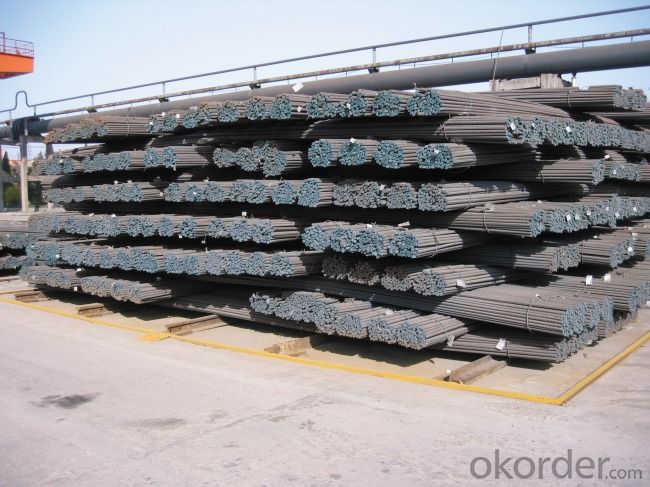
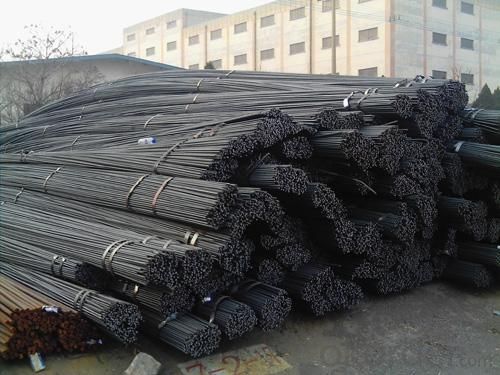
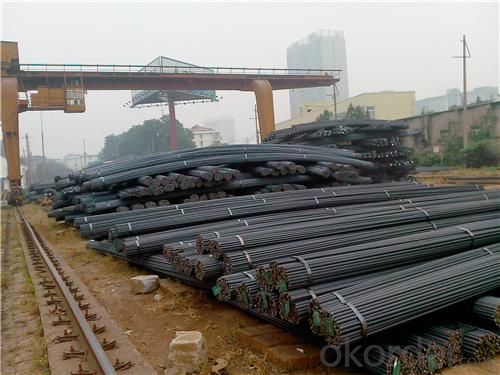
FAQ:
Q1: How soon can we receive the product after purchase?
A1: Within three days of placing an order, we will begin production. The specific shipping date is dependent upon international and government factors, but is typically 7 to 10 workdays.
Q2: What makes stainless steel stainless?
A2: Stainless steel must contain at least 10.5 % chromium. It is this element that reacts with the oxygen in the air to form a complex chrome-oxide surface layer that is invisible but strong enough to prevent further oxygen from "staining" (rusting) the surface. Higher levels of chromium and the addition of other alloying elements such as nickel and molybdenum enhance this surface layer and improve the corrosion resistance of the stainless material.
- Q: How do steel rebars improve the durability of concrete structures?
- Steel rebars improve the durability of concrete structures by providing added strength and reinforcement. They enhance the load-bearing capacity of the concrete, prevent cracking and deformation, and increase resistance to tension and bending forces. This reinforcement helps to minimize structural damage caused by factors like heavy loads, seismic activity, temperature fluctuations, and corrosion, ultimately increasing the lifespan and overall durability of the concrete structure.
- Q: What is the content ratio of the screw steel and manganese steel?
- The standard type of high manganese steel Mn13 steel and Hadfield steel, high manganese steel castings in China National Standard (GB/T5680-1998) grade: ZGMn13-1, ZGMn13-2, ZGMn13-3, ZGMn13-4, ZGMn13-5; ASTM (ASTMA128/A128M-1993) standard austenitic manganese steel casting steel are: ASTM-A (UNS-J9110.
- Q: How are steel rebars connected or joined together during construction?
- During construction, there are several methods and techniques for connecting steel rebars. One common method is to overlap the rebars and tie them together with steel wire, a process known as rebar tying or wire tying. To ensure a strong and secure connection, the rebars are overlapped at a length typically 40 to 60 times the diameter of the rebars. This overlapping length allows for load transfer and structural integrity. Once properly overlapped, steel wire is tightly wrapped around the intersection point to hold the rebars together. Another method is to use mechanical couplers, which are pre-fabricated devices that join two rebars together. These couplers provide a threaded connection, allowing for a more precise and efficient joining process. The rebars are inserted into the couplers and tightened using a wrench or appropriate tool. In larger construction projects, welding is also used to connect rebars. This involves melting the rebars at the intersection point and fusing them together with heat and pressure. Welding provides a strong and permanent connection but requires skilled labor and safety precautions. In some cases, rebars can be connected using epoxy bonding. This involves applying adhesive to the rebars' surface and pressing them together. The epoxy acts as a bonding agent, creating a durable connection. The method of connecting rebars depends on factors like rebars' size, project requirements, and construction techniques. It's important to follow industry standards and guidelines to ensure proper connection and integrity, as rebars play a critical role in reinforcing concrete structures.
- Q: How do steel rebars contribute to the overall energy efficiency of a building?
- Steel rebars contribute to the overall energy efficiency of a building by enhancing its structural integrity and reducing the need for excessive heating, cooling, and maintenance. The use of steel rebars in construction provides increased durability, which allows for longer building lifespan, reduced repairs, and lower energy consumption. Additionally, steel rebars can be recycled, reducing the environmental impact and energy required for construction materials.
- Q: What are the different types of corrosion protection coatings for steel rebars?
- There are several types of corrosion protection coatings available for steel rebars, each offering different levels of protection and durability. 1. Epoxy Coatings: Epoxy coatings are one of the most common and effective corrosion protection coatings for steel rebars. They provide a thick, durable barrier that prevents moisture and corrosive substances from reaching the steel surface. Epoxy coatings can be applied by spray, brush, or dip methods and provide excellent adhesion and resistance to chemicals. 2. Zinc Coatings: Zinc coatings, such as hot-dip galvanization or zinc-rich paint, are another popular choice for corrosion protection. These coatings create a sacrificial barrier, where the zinc corrodes instead of the steel rebar. Zinc coatings are highly effective in preventing corrosion, even in harsh environments, and can be applied in various thicknesses depending on the level of protection required. 3. Fusion-Bonded Epoxy (FBE) Coatings: FBE coatings are commonly used in underground or submerged applications. These coatings are applied by heating the steel rebar, which causes the epoxy powder to melt and bond to the surface. FBE coatings provide excellent corrosion resistance and are resistant to chemicals, abrasion, and impact. 4. Polymer Coatings: Polymer coatings, such as polyurethane or polyethylene, are often used in high-temperature environments or where chemical resistance is required. These coatings provide a protective barrier that is resistant to UV radiation, abrasion, and chemicals. Polymer coatings can be applied by spray or dip methods and offer good adhesion to the steel surface. 5. Concrete Coatings: In reinforced concrete structures, the concrete itself can act as a corrosion protection coating for the steel rebars. The high alkalinity of concrete creates a protective layer around the steel, known as the passivating layer, which helps prevent corrosion. Additionally, the use of corrosion inhibitors in the concrete mix can enhance the corrosion protection of steel rebars. It is important to select the appropriate corrosion protection coating based on the specific environmental conditions, intended application, and required durability. Consulting with experts or engineers experienced in corrosion protection can help determine the most suitable coating for steel rebars in a given situation.
- Q: What are the sizes available for steel rebars?
- Steel rebars, also known as reinforcing bars, come in various sizes to suit different construction needs. The sizes available for steel rebars typically range from #3 to #18. Each size is denoted by a number, which corresponds to the diameter of the bar in inches. For example, a #3 rebar has a diameter of 3/8 inch, while a #18 rebar has a diameter of 2 1/4 inches. These sizes are standardized and commonly used in construction projects worldwide. The choice of rebar size depends on factors such as the structural requirements, load-bearing capacity, and specific engineering specifications for a particular project. The larger the diameter of the rebar, the higher its strength and load-bearing capacity. It is important to note that the availability of sizes may vary depending on the region or country, as different standards and regulations may be followed. It is always recommended to consult local building codes and engineering professionals to determine the appropriate size of steel rebars to be used in a construction project.
- Q: How are steel rebars connected or joined together?
- Steel rebars are commonly connected or joined together using different techniques such as overlapping, welding, mechanical splicing, or using couplers. These methods ensure a strong and secure connection between the rebars, enhancing the structural integrity of reinforced concrete elements.
- Q: Are steel rebars suitable for use in hospital construction?
- Yes, steel rebars are suitable for use in hospital construction. Steel rebars provide excellent strength and durability, making them ideal for reinforcing concrete structures in hospitals. They ensure the integrity of the building, withstand heavy loads, and enhance the overall safety and stability of the hospital.
- Q: What is the impact of steel rebars on the overall sustainability of a building?
- Steel rebars have a significant impact on the overall sustainability of a building due to their various environmental, economic, and social implications. Firstly, steel rebars contribute to the durability and resilience of the structure, enhancing the longevity of the building. This means that the building will require fewer repairs and renovations over its lifespan, reducing the need for additional resources and minimizing waste. In terms of environmental impact, steel rebars can be recycled, reducing the demand for new steel production and the associated carbon emissions. Recycling steel rebars also saves energy and reduces the extraction of raw materials, such as iron ore and coal. Additionally, steel rebars can be salvaged and reused in other construction projects, further extending their lifespan and reducing waste. From an economic standpoint, the use of steel rebars can lead to cost savings in construction and maintenance. Steel is a versatile and strong material, allowing for lighter and more efficient designs, which can result in reduced material and labor costs. Moreover, the recyclability and salvagability of steel rebars can provide economic benefits through the resale or repurposing of the material. Furthermore, steel rebars play a crucial role in ensuring the safety and structural integrity of buildings, especially in areas prone to earthquakes or high winds. By providing reinforcement to concrete, steel rebars enhance the resistance of the building to external forces, reducing the risk of collapse or damage during natural disasters. This aspect of safety is essential for the wellbeing of occupants and the community at large. In conclusion, steel rebars have a positive impact on the overall sustainability of a building. They contribute to durability, reduce environmental impacts through recycling and reuse, offer economic benefits, and enhance the safety of the structure. Incorporating steel rebars in construction projects can significantly improve the long-term sustainability and resilience of buildings.
- Q: How do steel rebars affect the workability of concrete?
- Concrete workability can be significantly impacted by the presence of steel rebars. Initially, steel rebars in concrete contribute to increased strength and structural integrity. They act as reinforcement by absorbing and redistributing tensile forces, preventing cracking or collapsing under load. However, the addition of steel rebars also has various effects on concrete workability. Firstly, it reduces the workability or slump of the concrete mix. Consequently, the concrete becomes less fluid and more challenging to handle, particularly during pouring and placement. The rebars create obstacles and impede the flow of concrete, demanding greater effort to properly place and compact the mixture. Moreover, steel rebars can lead to issues such as segregation and segregation of concrete. Segregation arises when the heavier rebars cause the aggregate to settle at the bottom, resulting in an uneven distribution of components in the mixture. This can negatively impact the concrete's strength and durability. Additionally, ensuring proper bond between the steel and concrete may require additional measures. Adequate cover depth and correct placement of rebars are crucial to fully embed the rebars in the concrete, providing the necessary reinforcement. Failing to achieve a proper bond can jeopardize the concrete's strength and structural integrity. In conclusion, steel rebars have both positive and negative effects on concrete workability. While they enhance the strength and durability of the concrete, they also reduce its workability and require additional considerations during the mixing and placement process. Effective planning and execution are necessary to incorporate the rebars efficiently without hindering the overall workability and performance of the concrete.
Send your message to us
GB Standaerd deformed steel bar for construction
- Loading Port:
- Tianjin
- Payment Terms:
- TT or LC
- Min Order Qty:
- 25 m.t.
- Supply Capability:
- 100000 m.t./month
OKorder Service Pledge
OKorder Financial Service
Similar products
Hot products
Hot Searches
Related keywords



